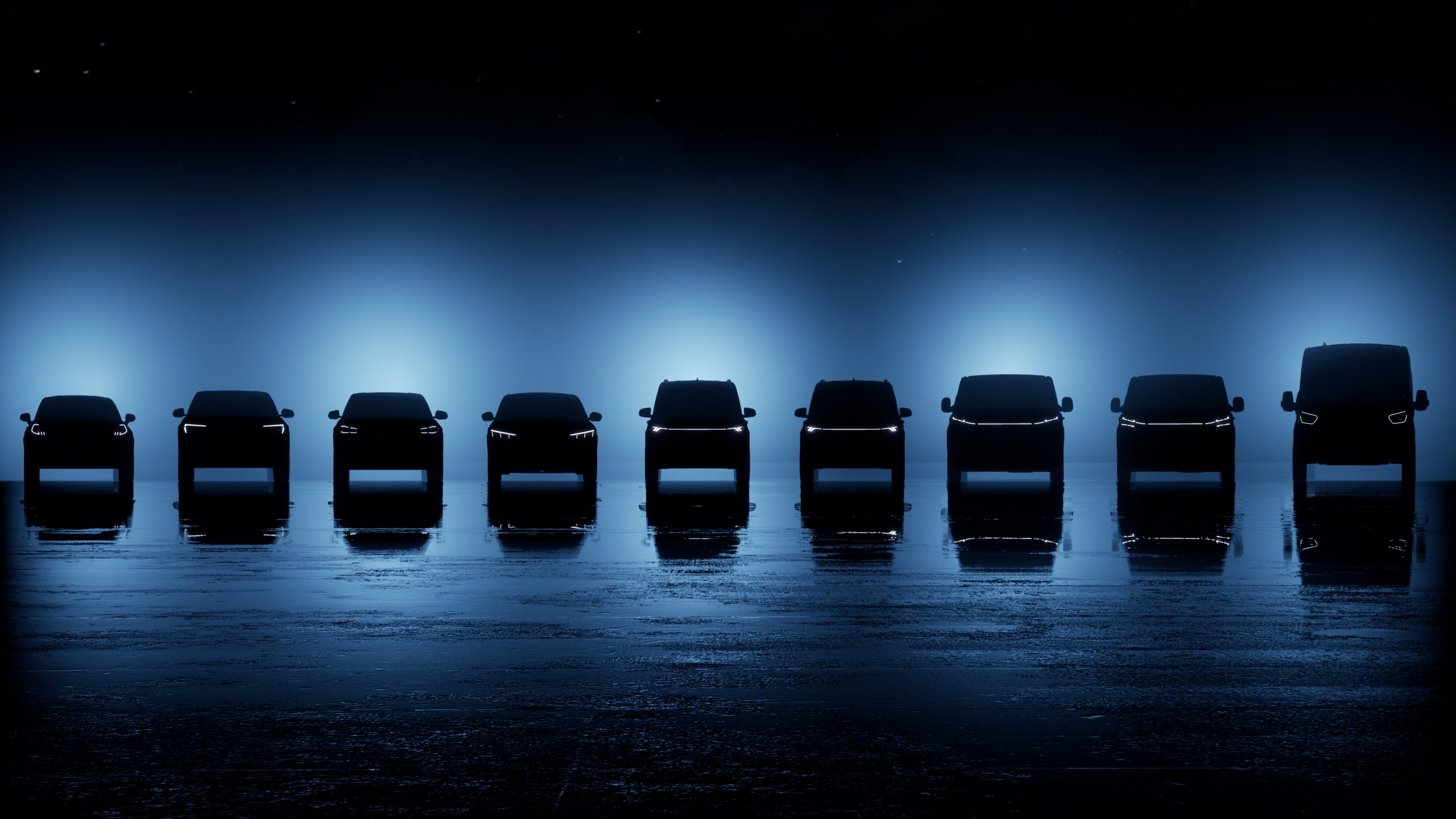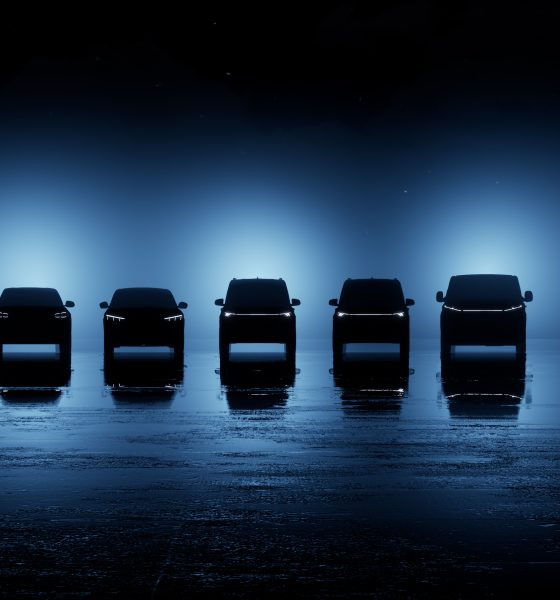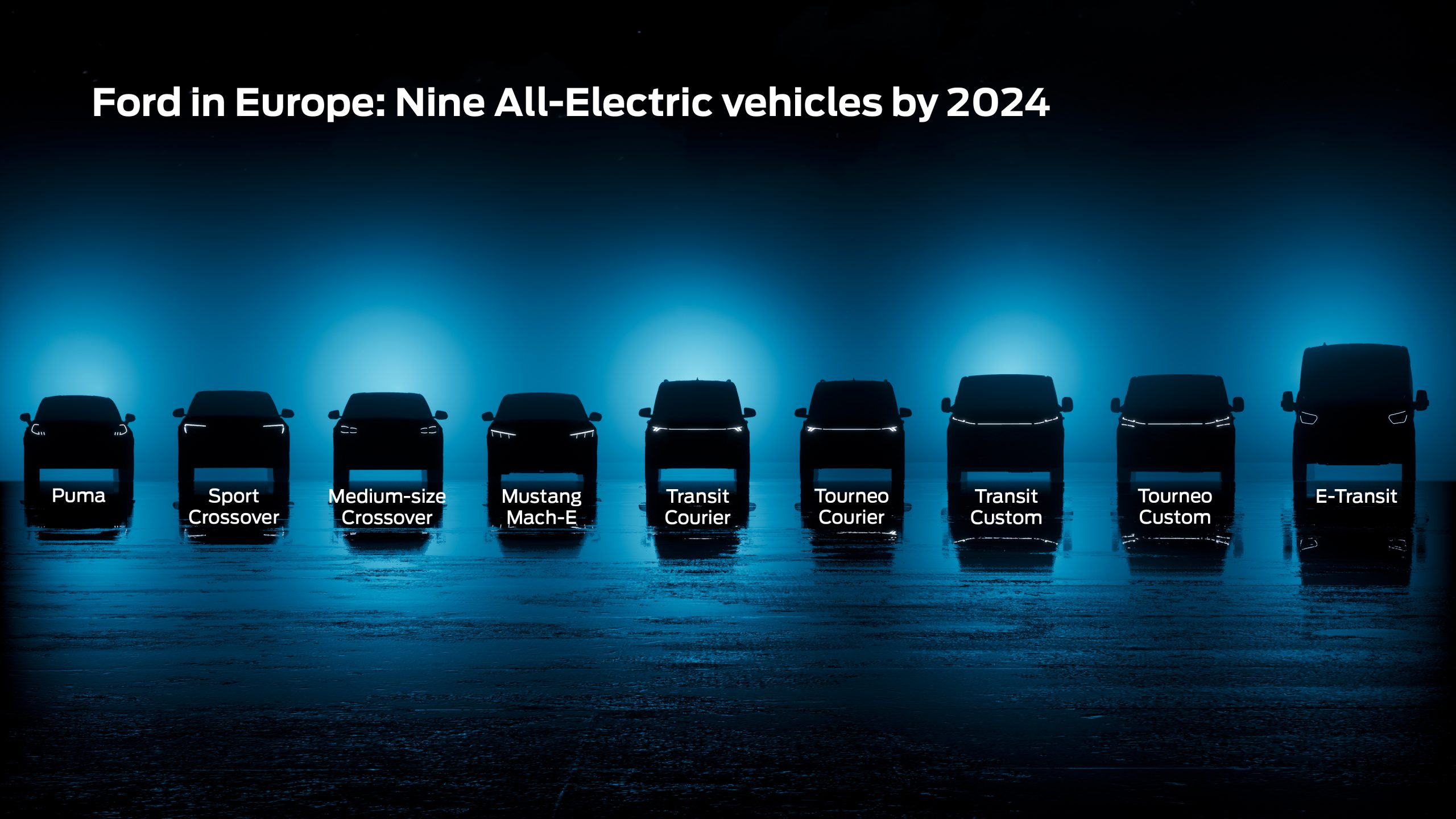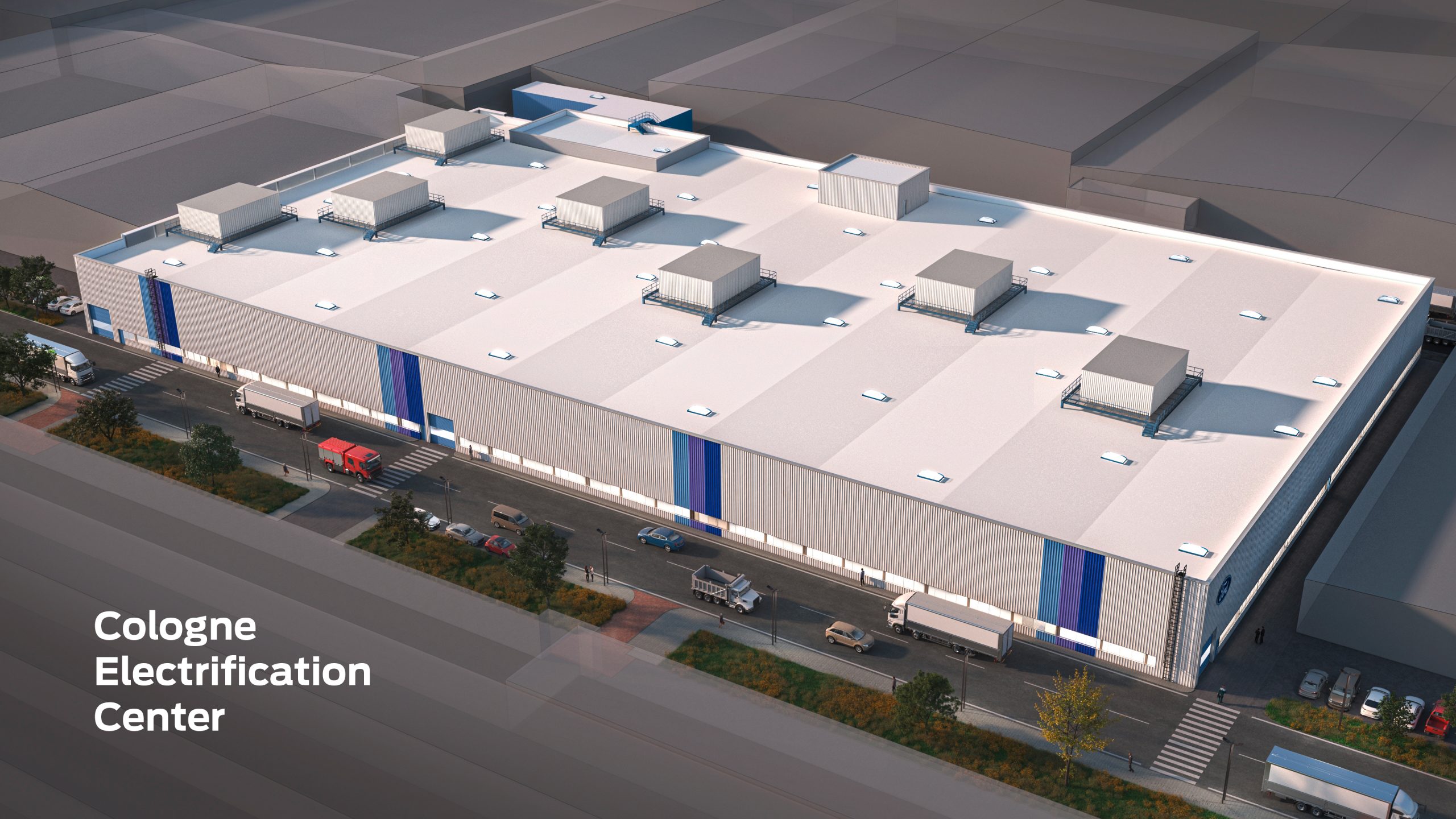

News
Ford Model e unit announces massive expansion of EV initiative in Europe: 7 new EVs by 2024
Ford’s electric vehicle unit — known as Model e — announced today that it would take massive steps to expand its electric vehicle project in Europe. Ford, which recently split its electric vehicle and combustion engine businesses into two divisions, is aiming to roll out seven new electric vehicles in Europe by 2024 with an annual production capacity of 600,000 vehicles by 2026.
Ford announced the expansion plan today, recognizing the accelerating pace of electrification in the European market. “I am delighted to see the pace of change in Europe – challenging our entire industry to build better, cleaner, and more digital vehicles. Ford is all-in and moving fast to meet the demand in Europe and around the globe,” Ford CEO Jim Farley said in a statement. “This is why we have created Ford Model e – allowing us to move at the speed of a start-up to build electric vehicles that delight and offer connected services unique to Ford and that are built with Ford-grade engineering and safety.”
Ford’s Model e division aims to take advantage of a Tesla-like business model that completely separates the electric vehicle projects from the traditional combustion engine powertrains that Ford built its legacy on. As one of the most-committed legacy automakers in the transition to electrification, Ford recently announced it would commit to a production goal of 600,000 EVs by the end of 2023.
In Europe, electric vehicles have become extremely popular, becoming a more common choice of consumers than combustion engine vehicles in some regions. Ford is turning some focus toward this market as it is likely to be one of the biggest catalysts to EV sales company-wide. Ford said it expects annual sales in Europe to exceed 600,000 units in 2026, reaffirming its intention to deliver a 6 percent EBIT margin in Europe in 2023.
“Our march toward an all-electric future is an absolute necessity for Ford to meet the mobility needs of customers across a transforming Europe,” Ford of Europe Chairman Stuart Rowley said. “It’s also about the pressing need for greater care of our planet, making a positive contribution to society and reducing emissions in line with the Paris Climate Agreement.”
Seven New EVs by 2024
With the Mustang Mach-E already having a successful introduction into the European market, Ford will also welcome the E-Transit to the region in Q2 2022. By 2024, Ford plans to introduce seven additional models to its electric lineup in Europe. It will include three new passenger vehicles and four new commercial cars.
In 2023, Ford will begin production of an all-new passenger EV. The company says it will be a “medium-sized crossover, built in Cologne with a second electric vehicle added to the Cologne production line-up in 2024.” Ford will also introduce an electric version of the Ford Puma. It will be produced in Craiova, Romania, starting in 2024.
Ford, which recently split its electric vehicle and combustion engine businesses into two divisions, is aiming to roll out seven new electric vehicles in Europe by 2026 with an annual production capacity of 600,000 vehicles. (Credit: Ford)
Ford is Europe’s top-selling commercial vehicle brand, and the company plans to introduce several new electric models of its Transit van — “the all-new Transit Custom one-tonne van and Tourneo Custom multi-purpose vehicle in 2023, and the smaller, next-generation Transit Courier van and Tourneo Courier multi-purpose vehicle in 2024.”
“These new Ford electric vehicles signal what is nothing less than the total transformation of our brand in Europe – a new generation of zero-emission vehicles, optimized for a connected world, offering our customers truly outstanding user experiences,” Rowley added.
Ford’s Cologne, Germany EV Hotspot
Ford also said that the first all-electric passenger vehicle to come out of the new Electrification Centre in Cologne will be a five-seat, medium-sized crossover. Crossovers are a widely popular body style and accounted for 58 percent of all Ford passenger vehicles sold in Europe in 2021. Ford plans to unveil the name and design of the new crossover in 2022. Production will begin in 2023.
Ford’s Cologne Electrification Center (Credit: Ford)
Additionally, Ford said its total investment in Cologne is expected to be $2 billion with the investment including plans for a new battery assembly facility that will begin production in 2024. The automaker projects at least 1.2 million vehicles produced at the Cologne Electrification Centre by 2030.
New battery partnership with SK On Co., Ltd., and Koç Holding
Ford announced that it also signed a non-binding Memorandum of Understanding for a new, industry-leading joint venture in Turkey with battery manufacturers SK On Co., Ltd. and Koç Holding. The plant will be located near Ankara, the country’s capital, and will manufacture high-Nickel Nickel-Manganese-Cobalt (NMC) cells for assembly into battery array modules. Nickel cells have been a focus of many large automakers transitioning to electric cars, as it is widely available. However, surging prices of the metal have contributed to a potential delay in these plans, at least in the short term.
Production is expected to start as early as mid-decade, Ford said, with annual capacity likely to be between 30 and 45 Gigawatt hours.
Ford said the investment will also be supported by the Turkish Government and will benefit large and small commercial vehicle operators across Europe, all while decreasing CO2 emissions.
EV Production Boost in Romania
Ford will also introduce an electric version of its best-selling European vehicle, the Puma. European customers will be able to purchase an all-electric version of the vehicle in 2024. Additionally, the Transit Courier and Tourneo Courio will be produced a the plant in 2023, with all-electric versions being offered the following year.
Ford’s joint venture with Koç Holding, known as Ford Otosan, will assume ownership of the Craiova, Romania plant. “We welcome this opportunity to grow our joint venture with Koc Holding and leverage this strategic partnership to better utilize our resources and know-how in Romania,” Rowley said. “Ford Craiova is today a strong success story, and we believe that through Ford Otosan’s experience and expertise in electrification and commercial vehicles it can reach even higher levels of achievement.”
I’d love to hear from you! If you have any comments, concerns, or questions, please email me at joey@teslarati.com. You can also reach me on Twitter @KlenderJoey, or if you have news tips, you can email us at tips@teslarati.com.

Elon Musk
Tesla’s Elon Musk: 10 billion miles needed for safe Unsupervised FSD
As per the CEO, roughly 10 billion miles of training data are required due to reality’s “super long tail of complexity.”

Tesla CEO Elon Musk has provided an updated estimate for the training data needed to achieve truly safe unsupervised Full Self-Driving (FSD).
As per the CEO, roughly 10 billion miles of training data are required due to reality’s “super long tail of complexity.”
10 billion miles of training data
Musk comment came as a reply to Apple and Rivian alum Paul Beisel, who posted an analysis on X about the gap between tech demonstrations and real-world products. In his post, Beisel highlighted Tesla’s data-driven lead in autonomy, and he also argued that it would not be easy for rivals to become a legitimate competitor to FSD quickly.
“The notion that someone can ‘catch up’ to this problem primarily through simulation and limited on-road exposure strikes me as deeply naive. This is not a demo problem. It is a scale, data, and iteration problem— and Tesla is already far, far down that road while others are just getting started,” Beisel wrote.
Musk responded to Beisel’s post, stating that “Roughly 10 billion miles of training data is needed to achieve safe unsupervised self-driving. Reality has a super long tail of complexity.” This is quite interesting considering that in his Master Plan Part Deux, Elon Musk estimated that worldwide regulatory approval for autonomous driving would require around 6 billion miles.
FSD’s total training miles
As 2025 came to a close, Tesla community members observed that FSD was already nearing 7 billion miles driven, with over 2.5 billion miles being from inner city roads. The 7-billion-mile mark was passed just a few days later. This suggests that Tesla is likely the company today with the most training data for its autonomous driving program.
The difficulties of achieving autonomy were referenced by Elon Musk recently, when he commented on Nvidia’s Alpamayo program. As per Musk, “they will find that it’s easy to get to 99% and then super hard to solve the long tail of the distribution.” These sentiments were echoed by Tesla VP for AI software Ashok Elluswamy, who also noted on X that “the long tail is sooo long, that most people can’t grasp it.”
News
Tesla earns top honors at MotorTrend’s SDV Innovator Awards
MotorTrend’s SDV Awards were presented during CES 2026 in Las Vegas.

Tesla emerged as one of the most recognized automakers at MotorTrend’s 2026 Software-Defined Vehicle (SDV) Innovator Awards.
As could be seen in a press release from the publication, two key Tesla employees were honored for their work on AI, autonomy, and vehicle software. MotorTrend’s SDV Awards were presented during CES 2026 in Las Vegas.
Tesla leaders and engineers recognized
The fourth annual SDV Innovator Awards celebrate pioneers and experts who are pushing the automotive industry deeper into software-driven development. Among the most notable honorees for this year was Ashok Elluswamy, Tesla’s Vice President of AI Software, who received a Pioneer Award for his role in advancing artificial intelligence and autonomy across the company’s vehicle lineup.
Tesla also secured recognition in the Expert category, with Lawson Fulton, a staff Autopilot machine learning engineer, honored for his contributions to Tesla’s driver-assistance and autonomous systems.
Tesla’s software-first strategy
While automakers like General Motors, Ford, and Rivian also received recognition, Tesla’s multiple awards stood out given the company’s outsized role in popularizing software-defined vehicles over the past decade. From frequent OTA updates to its data-driven approach to autonomy, Tesla has consistently treated vehicles as evolving software platforms rather than static products.
This has made Tesla’s vehicles very unique in their respective sectors, as they are arguably the only cars that objectively get better over time. This is especially true for vehicles that are loaded with the company’s Full Self-Driving system, which are getting progressively more intelligent and autonomous over time. The majority of Tesla’s updates to its vehicles are free as well, which is very much appreciated by customers worldwide.
Elon Musk
Judge clears path for Elon Musk’s OpenAI lawsuit to go before a jury
The decision maintains Musk’s claims that OpenAI’s shift toward a for-profit structure violated early assurances made to him as a co-founder.

A U.S. judge has ruled that Elon Musk’s lawsuit accusing OpenAI of abandoning its founding nonprofit mission can proceed to a jury trial.
The decision maintains Musk’s claims that OpenAI’s shift toward a for-profit structure violated early assurances made to him as a co-founder. These claims are directly opposed by OpenAI.
Judge says disputed facts warrant a trial
At a hearing in Oakland, U.S. District Judge Yvonne Gonzalez Rogers stated that there was “plenty of evidence” suggesting that OpenAI leaders had promised that the organization’s original nonprofit structure would be maintained. She ruled that those disputed facts should be evaluated by a jury at a trial in March rather than decided by the court at this stage, as noted in a Reuters report.
Musk helped co-found OpenAI in 2015 but left the organization in 2018. In his lawsuit, he argued that he contributed roughly $38 million, or about 60% of OpenAI’s early funding, based on assurances that the company would remain a nonprofit dedicated to the public benefit. He is seeking unspecified monetary damages tied to what he describes as “ill-gotten gains.”
OpenAI, however, has repeatedly rejected Musk’s allegations. The company has stated that Musk’s claims were baseless and part of a pattern of harassment.
Rivalries and Microsoft ties
The case unfolds against the backdrop of intensifying competition in generative artificial intelligence. Musk now runs xAI, whose Grok chatbot competes directly with OpenAI’s flagship ChatGPT. OpenAI has argued that Musk is a frustrated commercial rival who is simply attempting to slow down a market leader.
The lawsuit also names Microsoft as a defendant, citing its multibillion-dollar partnerships with OpenAI. Microsoft has urged the court to dismiss the claims against it, arguing there is no evidence it aided or abetted any alleged misconduct. Lawyers for OpenAI have also pushed for the case to be thrown out, claiming that Musk failed to show sufficient factual basis for claims such as fraud and breach of contract.
Judge Gonzalez Rogers, however, declined to end the case at this stage, noting that a jury would also need to consider whether Musk filed the lawsuit within the applicable statute of limitations. Still, the dispute between Elon Musk and OpenAI is now headed for a high-profile jury trial in the coming months.








